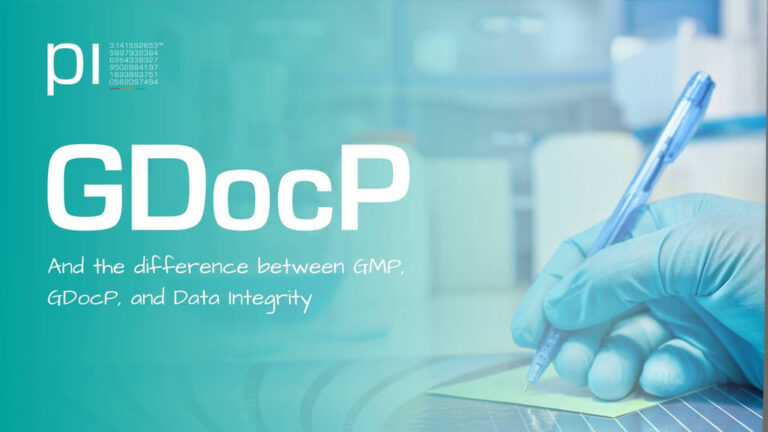One of the main challenges organizations that are developing a QMS face, is undoubtedly the starting point. This blog defines a QMS with its advantages, lists examples of QMS used in organizations, and explains six helpful tips that companies should undertake before starting the development and implementation of a QMS.
Across different industries and sectors, there are several variations of quality management systems (QMS) intending to protect the quality of products and/or services. Almost every player active in a manufacturing environment is certified against a specific QMS, whether you are assembling parts for the automotive industry, producing medical devices or pharmaceuticals, processing food or even providing services.
What is a QMS?
A Quality Management System (QMS) is a formalized and structured system that documents processes, procedures, and responsibilities for achieving quality policies and objectives.
A QMS helps the activities of an organization to meet customer and regulatory requirements and improve its effectiveness and efficiency continuously.

What are the advantages of a QMS?
There are too many to list. But I give you some which probably will pay your attention:
-
helping to offer your products or services consistently
-
creating a culture of quality and awareness within your organization
-
better managing process risks
-
making compliance with customer requirements easier
-
detecting weak spots within the full organization
-
increasing businesses and profits
-
reduction of the cost of poor quality
-
decrease customer complaints and increase customer loyalty
-
…
Applicability of a QMS?
The framework and requirements of a QMS are documented in a standard. We can group QMS-standards into two groups: the generic standards and the sector-specific standards.
The most known generic standard is ISO 9001 (Quality Management Systems):
It can be used by any organization, large or small, regardless of its field of activity. There are over one million companies and organizations in over 170 countries certified to ISO 9001.
This standard is not a legal requirement but to be certified against ISO 9001 gives confidence to customers and is an important indicator of an organization’s commitment to providing quality products and services.
Other noted generic standards are:
-
ISO 14001 (Environmental Management System)
-
ISO 45001 (Occupational Health & Safety Management Systems) which has replaced OHSAS 18001 in 2018.
Sector-specific quality standards are requirements developed by a particular industry to address specific needs or requirements. One of the most applied sector-specific standards in the life sciences industry is the ISO 13485 quality management system for the medical device industry:
ISO 13485 is a stand-alone standard and the latest update in 2016 is following the structure of ISO9001:2008 (Yes, 2008, not 2015). The difference is that the documentation and safety requirements are much greater under ISO13485:2016, whereas ISO9001:2015 puts focus on customer satisfaction and continuous improvement
ISO 13485 was written to support medical device manufacturers in designing quality management systems that establish and maintain the effectiveness of their processes. It ensures the consistent design, development, production, installation, and delivery of medical devices that are safe for their intended purpose.
This global standard is not mandatory in Europe. The new medical device directives only indicate that manufacturers are obligated to have “a” QMS in place but not specifically meeting the requirements ISO 13485.
Other sector-specific standards:
-
ISO 22000 (Food Safety Management Systems)
-
IATF 16949 (QMS for automotive production, service and/or accessory parts)
-
AS9100 (QMS standard for the Aviation, Space and Defense industry)
1. Involvement starts from the top
In quite some companies, the support of the top management (in some revised QMS-standards also called “leadership”) is rather limited. For example, they do not know what efforts and resources are necessary or they do not participate actively in developing and implementing activities. There are much more involvement and responsibility expected than just watching from the sideline. Good leaders are proactive, cooperative, and have a permanent overview of the progress of the QMS-activities. They also act as strong unconditional decision-makers, for example:
-
Approving the needed resources
-
Setting up quality goals and targets
-
Defining the strategic direction
-
Adoption of the organizational scheme
-
Supporting and attending periodic status meetings, …
2. Everyone is responsible
A quality systems representative should be appointed and its responsibility is to build a decent QMS and to maintain the effectiveness of the system once implemented. It is important to emphasize that responsibility is not the same as accountability. The representative acts as a facilitator overviewing the planning, the status, and the progress of the actions to be implemented. Action owners on the other hand are responsible and accountable to deliver the agreed results.

3. Teamwork is paramount
One person cannot create a QMS on its own. Everyone in the organization involved in the QMS needs to be aware that they are an essential part and key to success. Frequent communication to all employees by the top management and the quality systems representative is required to retain awareness. Discuss subjects and issues openly during periodic multidisciplinary meetings.
4. Initial training
You can create and increase involvement by training employees before performing the first implementation step. The first training preferably is an introductory course for all employees explaining basic things such as
-
what is a QMS?
-
what is the added value for the company?
-
what are the main chapters of the QMS you want to implement?
-
what is a policy, procedure, work instruction,…?
-
what is a process, (SIPOC, turtle diagram)?
-
explain QMS specific definitions (for example CAPA, risks, change control, nonconformity,…)?
-
what is the planning for the QMS?
-
what is the role of the representative, top management,…?
-
what are the expectations of the employees?
-
….
Make the course easy to understand for all attendees as few are familiar with the terms and usages of quality management systems. Avoid text-only training and try to make the session interactive, visualize topics with pictures, diagrams, practical examples,… as much as possible.
5. Good documentation does not mean writing poems
A special point of attention is the structure and content of your documentation. Many organizations tend to write countless documents with excessive information in it. In all QMS there is written that “procedures or documented information shall be established” but none of them indicate how many pages the documents should contain J. Organizations forget often that all relevant employees need to be trained or retrained.
Do not overload your employees with information because it will demotivate and surely create aversion. Furthermore, too much documentation becomes unmanageable as a periodic review, update, and training is a basic requirement in a QMS.
6. Avoid postponement behavior
It takes a lot of time to create a QMS from scratch whereas small organizations spend approximately one year and big organizations for up to two years to set up the minimum requirements of a decent quality management system.
Many employees have a busy agenda and other priorities, which consequently results in procrastination of further development of the QMS. It is not unusual that many organizations are rushing the last weeks to implement several open action points. This mostly results in a lot of pressure on several departments, no more time left for critical reviews, too few brainstorm sessions, and in the worst case an insufficient QMS.
Create a realistic development and implementation plan after performing the GAP-assessment. Review minimum bi-weekly the open action points, the progress made and expected target dates, and adjust where necessary. Also, top management needs to fulfill their leadership role and is responsible to proactively monitor the progress of the activities.
References
Blog by Pascal van Lierde




